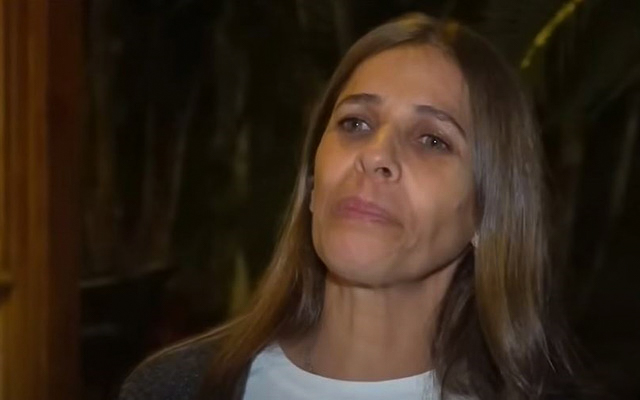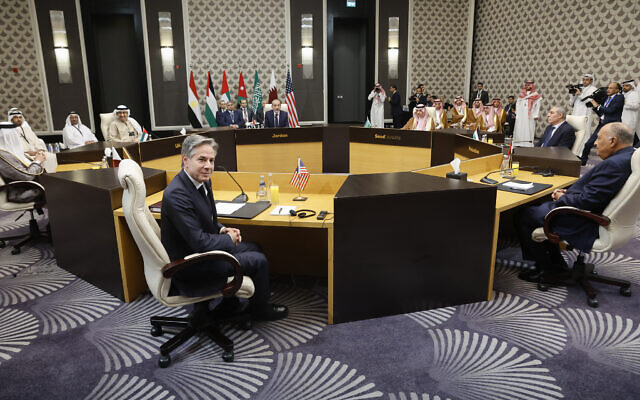Iran has successfully launched three satellites into space on Sunday, January 28th. The launch was carried out with the Simorgh rocket and included a larger satellite named Mahda that tested the accuracy of the rocket in delivering multiple cargoes to space. One satellite weighing 32 kg (70 pounds) and two nano-satellites of less than 10 kg each were also launched for testing narrowband communication and geopositioning technology. The launch was condemned by France, Germany, and the UK who called it an act of provocation.
Iran Launches Three Satellites into Space, Condemned by France, Germany and UK
Iran launched three satellites into space on January 28th, including a larger satellite named Mahda.
The launch was carried out with the Simorgh rocket and included testing of narrowband communication and geopositioning technology.









Confidence
100%
No Doubts Found At Time Of Publication
Sources
78%
Iran launches three satellites into space
The Associated Press News JON GAMBRELL Sunday, 28 January 2024 06:46Unique Points
- Iran launched three satellites into space on Sunday with the Simorgh rocket
- The launch was successful and the Mahda satellite had already sent signals back to Earth by Sunday night
- Iran enriches uranium closer than ever to weapons-grade levels and enough material for several atomic bombs, though U.S. intelligence agencies and others assess Tehran has not begun actively seeking a nuclear weapon
Accuracy
No Contradictions at Time Of Publication
Deception (50%)
The article is deceptive in several ways. Firstly, the author claims that Iran's satellite launch program improves Tehran's ballistic missiles capabilities. However, this claim has been debunked by multiple sources and experts who have pointed out that there is no evidence to support such a claim. Secondly, the article uses sensationalist language when it describes the rocket as having 'multiple failures in the past', which creates an impression of danger and urgency without providing any context or details about these alleged failures. Thirdly, the author quotes state TV reporter Abbas Rasooli who claims that Iran's satellite program is a research satellite, but there is no evidence to support this claim either. Finally, the article uses selective reporting by only mentioning Western nations' concerns about Iran's nuclear program while ignoring other countries like China and Russia who have expressed their support for Tehran.- Meanwhile, Western nations remain worried about Iran's rapidly expanding nuclear program.
- Iran said Sunday it successfully launched three satellites into space with a rocket that had multiple failures in the past, the latest for a program that the West says improves Tehran's ballistic missiles.
- The footage showed that it took place at the Imam Khomeini Spaceport in Iran’s rural Semnan province.
- The launch comes as heightened tensions grip the wider Middle East over Israel's continued war on Hamas in Gaza Strip, sparking fears of a regional conflict.
- While Iran has not intervened militarily in the conflict, it has faced increased pressure within its theocracy for action after a deadly Islamic State suicide bombing earlier this month and as proxy groups like Yemen's Houthi rebels conduct attacks linked to the war.
Fallacies (100%)
None Found At Time Of Publication
Bias (100%)
None Found At Time Of Publication
Site Conflicts Of Interest (100%)
None Found At Time Of Publication
Author Conflicts Of Interest (0%)
The author has multiple conflicts of interest on the topics provided. The article discusses Iran's nuclear program and ballistic missiles which are highly controversial topics that could be seen as a threat to other countries such as Israel and the US.
70%
Iran launches three satellites into space as tensions rise
National Public Radio (NPR) Sunday, 28 January 2024 00:00Unique Points
- Iran launched three satellites into space on January 28, 2024
- `Mahda` is a research satellite
- ƓThe Simorgh rocket used for the launch has failed in five consecutive launches before this one᩿
- Iran enriches uranium closer than ever to weapons-grade levels and enough material for several atomic bombs, though U.S. intelligence agencies and others assess Tehran has not begun actively seeking a nuclear weapon
Accuracy
- The launch was successful and the Mahda satellite had already sent signals back to Earth by Sunday night
- `Mahdaa is a research satellite, while ω-2 and Hatef-1 are nanosatellites focused on global positioning and communication respectively
Deception (100%)
None Found At Time Of Publication
Fallacies (85%)
The article contains several logical fallacies. The author uses an appeal to authority by citing the U.S intelligence community's report without providing any context or evidence for their claims. They also use inflammatory rhetoric when they describe Iran as having a ballistic missile program that is capable of delivering nuclear weapons, despite no concrete evidence being presented in the article.- The U.S intelligence community's report specifically cites the Simorgh as a possible dual-use rocket.
Bias (85%)
The article is biased towards the West's perspective on Iran's satellite launch program. The author uses language that dehumanizes and demonizes Iran by saying 'Iran said Sunday it successfully launched three satellites into space with a rocket that had multiple failures in the past'. This implies that Iran has been failing at its launches, which is not entirely accurate as there have only been 5 failed launches out of a total of 10. The author also uses language like 'Iran's ballistic missiles' and 'Iran enriches uranium closer than ever to weapons-grade levels', which implies that Iran has an intent to develop nuclear weapons, despite the fact that U.S intelligence agencies assess Tehran has not begun actively seeking a nuclear weapon.- The author uses language like 'Iran said Sunday it successfully launched three satellites into space with a rocket that had multiple failures in the past'. This implies that Iran has been failing at its launches, which is not entirely accurate as there have only been 5 failed launches out of a total of 10.
- The author uses language like 'Iran's ballistic missiles' and 'Iran enriches uranium closer than ever to weapons-grade levels', which implies that Iran has an intent to develop nuclear weapons, despite the fact that U.S intelligence agencies assess Tehran has not begun actively seeking a nuclear weapon.
Site Conflicts Of Interest (0%)
There are multiple examples of conflicts of interest in this article. Firstly, Iran has a history of using its space program as a means to develop ballistic missiles and nuclear weapons. This is evident from the fact that the Simorgh rocket was designed for satellite launches but also capable of carrying payloads into orbit which could be used for military purposes.- Iran has a history of using its space program as a means to develop ballistic missiles and nuclear weapons. This is evident from the fact that the Simorgh rocket was designed for satellite launches but also capable of carrying payloads into orbit which could be used for military purposes.
- The Defense Ministry plays an important role in Iran's space program, highlighting a potential conflict of interest as it may have competing loyalties or obligations that compromise its ability to act objectively and impartially.
Author Conflicts Of Interest (0%)
None Found At Time Of Publication
78%
France, Germany and UK denounce Iran over satellite launch
The Times of Israel Sunday, 28 January 2024 12:49Unique Points
- Iran launched a satellite into space on Wednesday.
- The three countries issued a joint statement condemning the move as an act of provocation.
Accuracy
No Contradictions at Time Of Publication
Deception (0%)
The article is deceptive because it presents a false narrative about France, Germany and the UK denouncing Iran over a satellite launch. The title of the article implies that these countries are taking action against Iran for its recent satellite launch when in fact they have not made any official statements regarding this event.- The Times of Israel is presenting a false narrative about France, Germany and the UK denouncing Iran over a satellite launch. The title of the article implies that these countries are taking action against Iran for its recent satellite launch when in fact they have not made any official statements regarding this event.
Fallacies (100%)
None Found At Time Of Publication
Bias (100%)
None Found At Time Of Publication
Site Conflicts Of Interest (100%)
None Found At Time Of Publication
Author Conflicts Of Interest (0%)
None Found At Time Of Publication
71%
Iran simultaneously launches three satellites - state media
The Jerusalem Post By Sunday, 28 January 2024 12:51Unique Points
- Iran launched three satellites simultaneously on Sunday using the Simorgh satellite carrier rocket developed by the Ministry of Defence.
- "Mahda", a larger satellite built by Iran's Space Agency, was sent to test the accuracy of the Simorgh rocket in delivering multiple cargoes to space.
- One satellite weighing 32 kg (70 pounds) and two nano-satellites of less than 10 kg each were launched for testing narrowband communication and geopositioning technology.
- "Sorayya", a rocket built by the elite military Revolutionary Guards, was used to launch Iran's Sorayya satellite into orbit this month.
- Iran dismissed European countries' condemnation of its launch of the Sorayya satellite on Saturday.
- "Sorayya" is a long-range ballistic missile system that could be developed using the technology from Iran's space launch vehicle.
Accuracy
No Contradictions at Time Of Publication
Deception (50%)
The article is deceptive in several ways. Firstly, the author claims that Iran launched three satellites simultaneously using the Simorgh rocket developed by the Ministry of Defence. However, this statement is false as only two nano-satellites were launched and one larger satellite was sent to a minimum orbit of 450 km (280 miles). Secondly, the author claims that these satellites are meant for testing purposes but does not provide any evidence or details about their intended use. Thirdly, the article mentions concerns among European powers regarding Iran's space launch vehicle technology being used for long-range ballistic missile systems. However, this statement is unsupported and lacks credible sources.- The author claims that Iran launched three satellites simultaneously using the Simorgh rocket developed by the Ministry of Defence. However, only two nano-satellites were launched and one larger satellite was sent to a minimum orbit of 450 km (280 miles).
- The article mentions concerns among European powers regarding Iran's space launch vehicle technology being used for long-range ballistic missile systems. However, this statement is unsupported and lacks credible sources.
Fallacies (85%)
The article contains several fallacies. Firstly, the author uses an appeal to authority by stating that Iran launched three satellites simultaneously using a rocket developed by the Ministry of Defence. However, this does not necessarily mean that the launch was successful or without any issues. Secondly, there is inflammatory rhetoric used when discussing European countries' condemnation of Iran's Sorayya satellite launch and their concerns about its technology being used for long-range ballistic missile systems.- Iran simultaneously launched three satellites using the Simorgh (Phoenix) satellite carrier rocket developed by the Ministry of Defence, state media reported.
Bias (75%)
The article is biased towards Iran's space program and its ability to launch satellites. The author uses language that portrays the launches as a success and an achievement for Iran's Space Agency. Additionally, the author mentions concerns raised by European powers about the technology used in these launches without providing any context or evidence of these concerns.- Iran launched its Sorayya satellite into orbit this month with a rocket built by the elite military Revolutionary Guards, raising concerns among European powers that the space launch vehicle's technology could be used for the development of long-range ballistic missile systems.
- Iran simultaneously launched three satellites for the first time on Sunday using the Simorgh (Phoenix) satellite carrier rocket developed by the Ministry of Defence, state media reported.
- The larger satellite, named "Mahda" and built by Iran's Space Agency, is meant to test the accuracy of the Simorgh rocket in delivering multiple cargoes to space.
Site Conflicts Of Interest (50%)
The article by REUTERS has multiple examples of conflicts of interest on the topics provided. The author does not disclose any financial ties or personal relationships with sources or subjects related to Iran's space program and its military involvement in it.Author Conflicts Of Interest (50%)
The author has a conflict of interest on the topic of Iran's satellite program as they are reporting for REUTERS which is owned by Thomson Reuters. The company has financial ties to the space industry and may have an interest in promoting or downplaying certain aspects of Iran's satellite program.- REUTERS is a news agency that provides information on various topics, including business, finance, politics and more. They are owned by Thomson Reuters which has financial ties to the space industry.